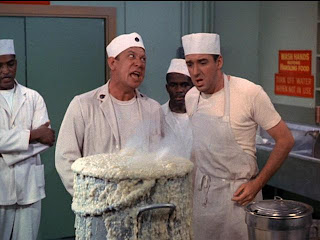I’ve talked a lot about innovation and experimentation particularly with the Frankenbacon chronicles but in fact there are two ways to experiment. The first is just to close your eyes and take a leap of blind faith. Sometimes things will work out, sometimes not so much. But, there is something to be said about pure experimentation for experimentation’s sake. The second way is to riff off of an existing standard. It's completely acceptable to create a personalized version of a known or iconic dish, but, if you do you gotta pay the piper. First things first, before you know which direction you want to take your personalized idealized version of a foodstuff you need to know what the original was meant to be. Without that base knowledge you're running blind and might as well just have gone for option one, the blind leap of faith.
In my quest to find my voice and personality when it comes to charcuterie items I’ve been trying various recipes and on subsequent versions I might tweak something here or there until I get my personalized version. The latest encased meat to meet it’s maker was Loukaniko, a Greek sausage. I was directed to this sausage by my boss who is very proud of their Greek heritage (as has been the case with every person of Greek origin I’ve ever met). I made this as an homage to her and I’m waiting for feedback from her and her mother, aka Ya-Ya. I poached the recipe from Len Poli’s exceptional compendium of meat-dom and the original can be found here: Loukaniko
I did things as close as I could to the original with what I had available and here’s my version:
Fresh Loukaniko – Greek Sausage
2270 grams pork shoulder
227 grams pork fat back
¼ cup red wine (I used Two-Buck Chuck)
36.0 grams kosher salt
12.0 grams orange zest
4.5 grams minced garlic
2.0 grams ground anise (not fennel)
2.0 grams fresh ground black pepper
2.0 grams dried marjoram
0.6 grams cinnamon
0.5 grams allspice
Hog casing
Grind all meat and fat through the large die of your meat grinder then regrind through your smaller die. Once ground mix all remaining ingredients until the meat mass becomes tacky. Stuff and twist into long links, about 6” each.
According to my boss loukaniko should be grilled until very, very well done...charred actually. I prefer to poach mine first until I reach an internal temp of about 155ºF then shock in an ice bath. The sausages are later re-heated and crisped up on the grill. This two step process allows the emulsion of meat and fat to set up fully so that I the texture doesn't get messed up when I grill it.
Tasting Notes: it took me a couple tries to like this sausage but eventually it grew on me. At first I felt the orange zest was too strong and overpowered the mix. The next day I tried another link and my first thought was that the sausage reminded me of winter. Essentially mulled spices in meat mix with the red wine, orange, cinnamon and allspice. While not unpleasant I still wasn’t feeling it. On day three or four I did my poach/grill job on them and they were fantastic. The orange had mellowed and the spices melded together and got all happy-like. I think moving forward I might adjust the flavorings based on the anticipated consumption rate. If I’m making the sausages to be consumed the next day I might cut things down a hair, however, if I’ve got a few days lead time I might use the basic version as everything will calm down before final preparation.























